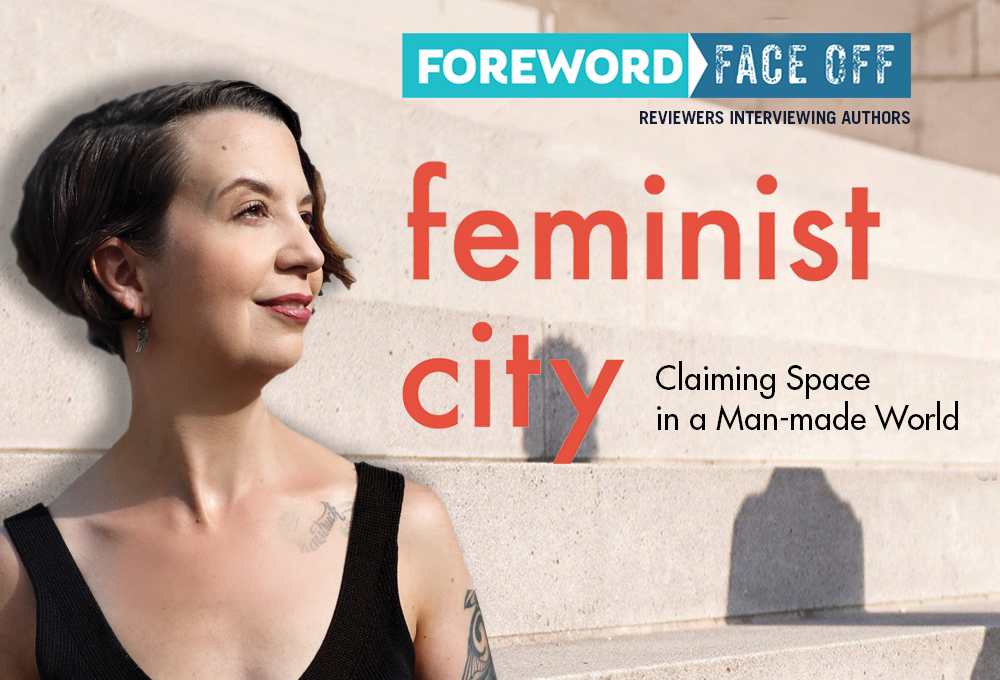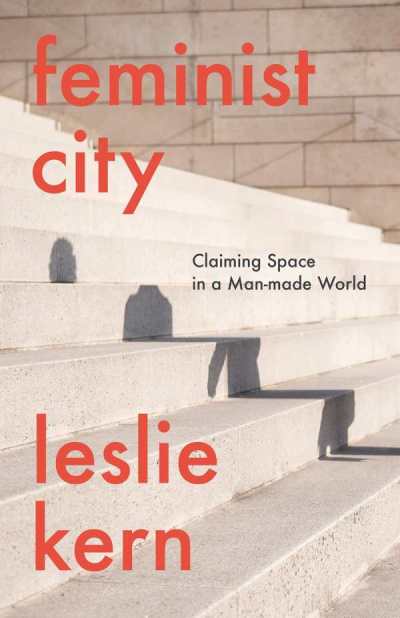Reviewer Tanisha Rule Interviews Leslie Kern, Author of Feminist City: Claiming Space in a Man-Made World

To be a single mother living in any big city in the US on a modest income is to know discrimination firsthand. Let’s run through a quick tally of injustices these women face: 1) strollers are almost impossible to use with public transportation; 2) childcare is prohibitively expensive and hard to find; 3) men frequently whistle and catcall at you as you walk by; 4) you’re forced to take expensive taxis or buses at night rather than walk or bike ride because of the danger of assault you face; 5) you choose not to work at a better paying night job because of that same fear; 6) with a pandemic raging, you don’t have the option of working from home so you’re endangered traveling to and from work, not to mention the additional risk of exposure while working a retail counter or in a care facility for elders; and 7) due to gentrification, you can’t afford to live near your work in the center of the city so you’ve moved out to the suburbs where public transit is unreliable and your commute takes hours out of your day.
We’ll leave it at that, but there’s loads of other discouraging examples. The point being, if you’re one of the many tens of thousands of single women in any US metropolis, the city isn’t your friend at all.

Leslie Kern has some ideas on how to change things for the better. The author of Feminist City: Claiming Space in a Man-Made World, Leslie has spent years researching and imagining what a feminist-friendly city would look like, but she knows it won’t be easy. What she wants everyone to do is “consider differing perspectives and needs when addressing the problems of urban planning,” in the words of Tanisha Rule, in her review of Feminist City for the July/August issue of Foreword Reviews.
In the FaceOff conversation with Tanisha below, Leslie asks: “What does your city’s development plan look like if, instead of taking an able-bodied, middle-class white man as your assumed ‘typical urban citizen,’ you started from the needs and experiences of a low-income single mother? A disabled student? A sex worker? A recent immigrant working two minimum wage jobs? A senior citizen on a fixed income?”
We’d like city planners everywhere to start considering those perspectives. Thanks to Verso Books for bringing this project to light and helping set up this interview.
Tanisha, you’re up.
You say in Feminist City that your “discovery” of feminist geography in graduate school made something click for you. For the uninitiated, what is feminist geography, and what about the grad course hit hard enough to compel you to investigate the subject further?
Feminist geography is a way of looking at places through a gendered and intersectional lens. It means considering how our experiences of places differ across gendered identities. It means thinking about who spaces have been designed for, who they include and exclude. It means thinking about how places like cities reflect and reproduce all sorts of power relations in society.
Despite being a women’s studies major, I had never heard of feminist geography! But right before I started grad school, I had a baby. My experiences of trying to navigate two big cities—London and Toronto—as a new mom were starting to suggest to me that there was something about the city itself that was set up to exclude me.
When I took a grad class called “Race, Space, and Citizenship,” something clicked. Realizing that space is not just a neutral container where the social world plays out, but also an active part of that social world, gave me an extra dimension for thinking about how power works. I started to understand that places have meaning, and those meanings are inflected with all our social norms about gender, race, class, ability, sexuality, and more.
What do you see as the biggest obstacle to normalizing the constructions of feminist cities?
A huge obstacle is simply the denial, or just ignorance, of the ways that built environments contribute to inequality. After all, a building isn’t sexist, is it? The suburbs don’t force women to be stay-at-home moms, do they? We tend to think of cities as rationally-planned, just a bunch of inert bricks, mortar, and pavement that we mould to our needs. So people don’t tend to “see” how gender norms have helped shape the spaces we have. And even more difficult is seeing how those spaces then start to shape and limit the possibilities for equality. One of the goals of *Feminist City *is to make this visible to people, so that you can then start to have the conversation about what to do about it. Certainly the feedback people have shared so far is that once they read the book, they can’t “un-see” gender in any space they go!
How does one start or maintain needed conversations about the need for gender equality in cities, when met with indifference, denial, or resistance?
It’s certainly a challenge because so much of how society and our economy functions relies on that very inequality. Disrupting it shifts the status quo in ways that destabilize our whole economic system. The COVID-19 crisis has been a moment where people are more willing to see the problems created by relying so heavily on women’s unpaid and under-paid care work and service work, in both the home and other sectors like health care, cleaning, and the food industry. It’s a house of cards. You pull out one piece and the whole thing starts to crumble. No school or child care? Half your workforce is out or juggling the ridiculous demands of homeschool and work. Pay your (mostly women and minority) personal care attendants poverty wages? They go to work in multiple long-term care homes and contribute to the deadly spread of the virus amongst the elderly.
I’m hopeful that we have an opportunity to make real changes in the way care work is distributed in society, and to revalue and finally properly pay for the absolutely essential work that so many women do, the work that literally keeps us fed, clean, cared for, and alive.
The concept of the non-sexist city co-op intrigues and encourages. Can you detail the types of co-op housing developments and communities you’ve seen thrive? Also, though it’s not a housing development, please do include your “city’s smallest babysitting co-op” as an example of what can be done right now to lighten women’s loads!
One takeaway from the book should be that the idea of a feminist city doesn’t require a new “master plan” to bulldoze the city and start over again, or a set of totally new ideas. Women have been designing and experimenting with different models of housing, neighborhoods, and cities, for well over a century. A famous example would be Jane Addams’s Hull House in Chicago, a “social settlement” founded in 1889 to respond to the needs of young, unmarried women and immigrants coming to the city and looking for safe and affordable housing, a sense of community, and resources. A century later, federal housing programs in Canada had money for co-op and subsidized housing for specific groups, such as single mothers, disabled women, and elderly women. Unfortunately, government rollbacks of funding for social housing means that few of these formal programs exist now, at least in North America.
Informally, however, women have always found ways to collectivize our resources and work around the limitations of public social services. I met my friend Anneke (as she’s called in the book) in that very grad class on “Race, Space and Citizenship,” and we soon discovered that we were both parents to young kids; my daughter was only five months old, Anneke had a one-year old and a four-year old. After months spent commiserating over how hard it was to get our work done, we decided to collectivize our child care two days a week. I’d watch the kids one morning while she went to the library to work, and we’d swap a couple days later. It was a lifesaver at the time, but really nothing new in terms of what women have often done to survive. It’s definitely a “try this at home” tip, but it’s even more important to ask, how can society more widely come up with creative, affordable, and accessible ways to share this labour?
The chapter “Gentrified Motherhood” paints a tiresome image of hardship and a seemingly insurmountable battle just to exist. To highlight the need for change, can you talk a bit about how city life stacks against vulnerable communities?
Living in the city has been seen by many as a solution to the hurdles posed by suburban life for women, in particular the difficulties of juggling domestic care responsibilities and paid work in an environment designed to keep work and home separate. The city seems to offer greater ease: there’s more transportation, things are closer together, people are less isolated. However, these benefits are distributed pretty unevenly across most cities, and gentrification (the movement of middle-class households and businesses into working class and minority neighborhoods) is concentrating these benefits in the hands of a privileged few who can afford the skyrocketing real estate of central city areas.
In my hometown of Toronto, the past four decades have seen the central core—close to subways, jobs, universities, and services—get whiter and wealthier, while the inner suburbs are home to lower-income communities and many recent immigrants. These areas are less walkable, have worse access to reliable public transit, and are much further from the kinds of things that might make life easier for women in cities.
You state that there are no easy solutions to urban planning, since what seems a solution for one demographic of women can spell disaster for another. With that sobering, honest assessment in mind, what is the biggest takeaway you want readers to gain from Feminist City?
The main thing is that city planning can and should start from different perspectives, and those perspectives should include people experiencing different forms of marginalization in cities. What does your city’s development plan look like if, instead of taking an able-bodied, middle-class white man as your assumed “typical urban citizen,” you started from the needs and experiences of a low-income single mother? A disabled student? A sex worker? A recent immigrant working two minimum wage jobs? A senior citizen on a fixed income?
The beauty of this is that improvements made from these perspectives are likely to improve the lives of many people; they’re not niche interventions to benefit a minority. For example, thinking about physical accessibility on public transit improves the lives of disabled people, people with children, seniors, and low-income people who rely on buses and trains to transport groceries and more. Affordable housing is also an anti-violence intervention, allowing victims of domestic violence an opportunity to leave and offering the kind of basic support to people that limits poverty-based crime. I hope people see the ideals of a “feminist city” as not solely about women, but as ideals that could create much more just and equitable cities for everyone.
Tanisha Rule
